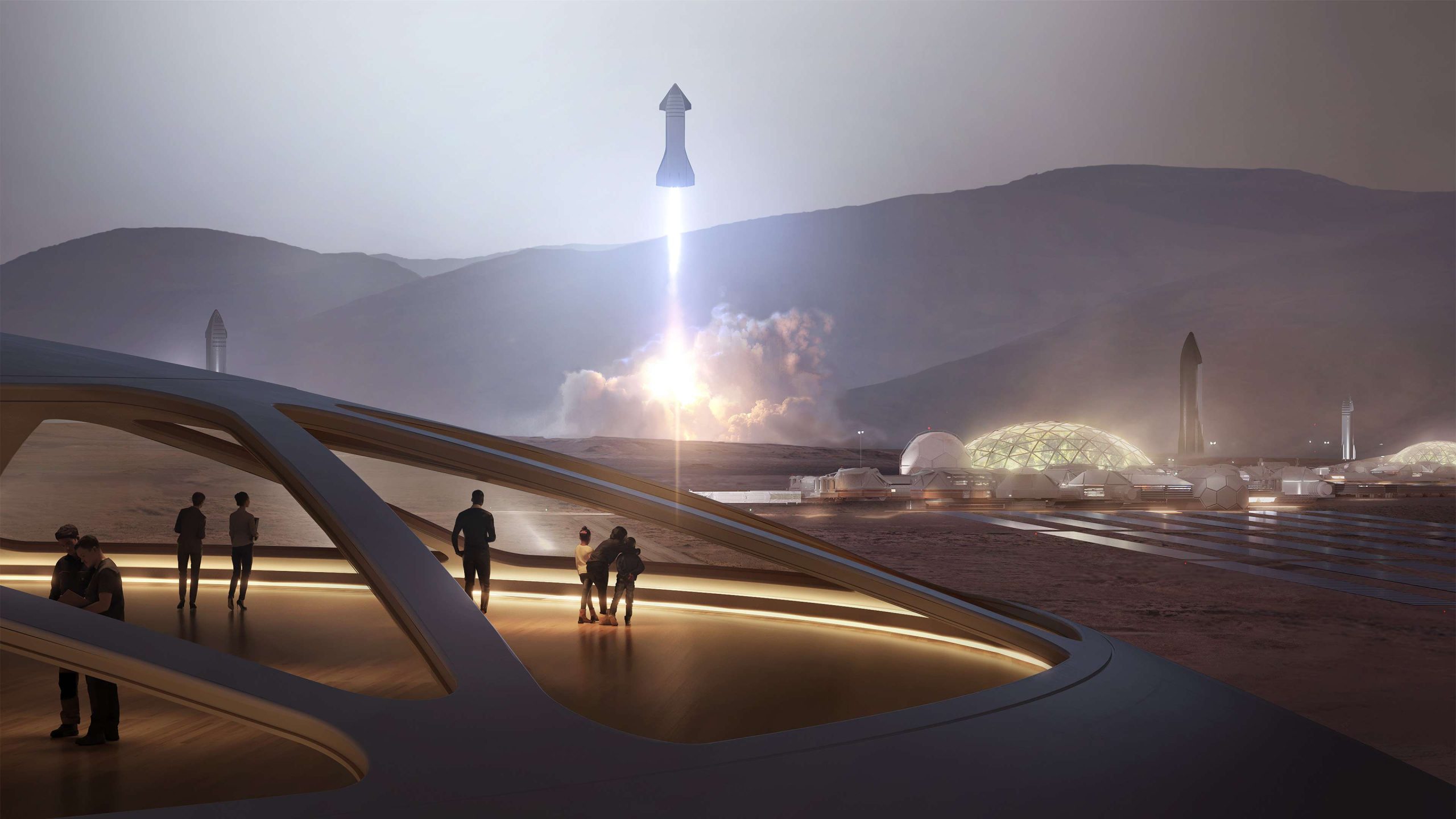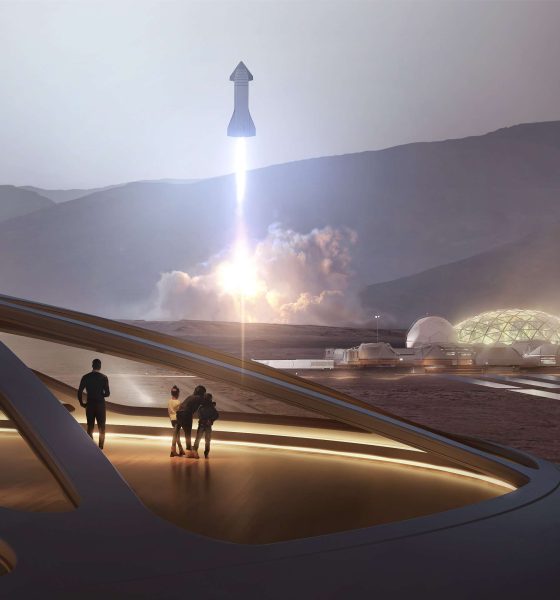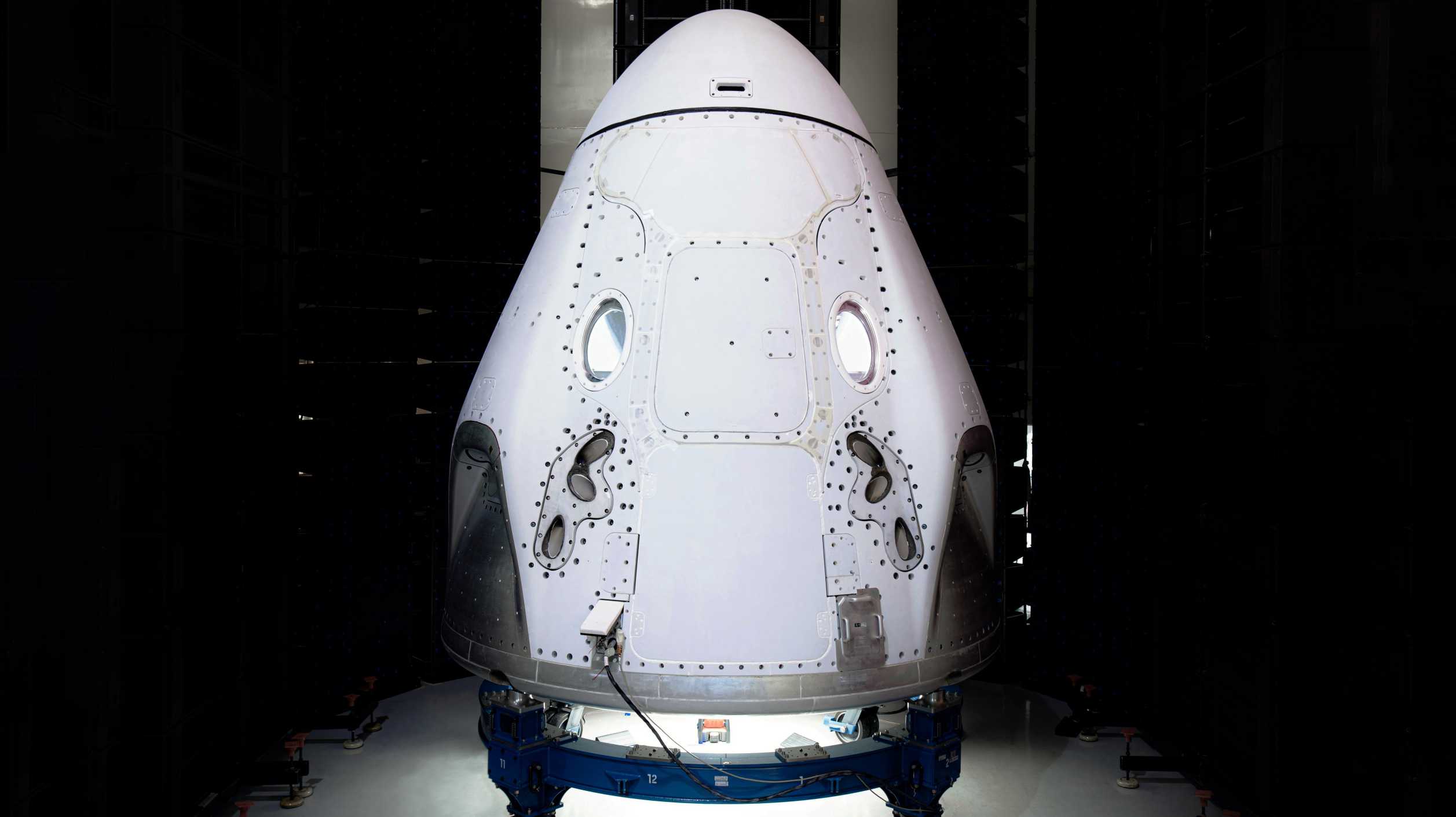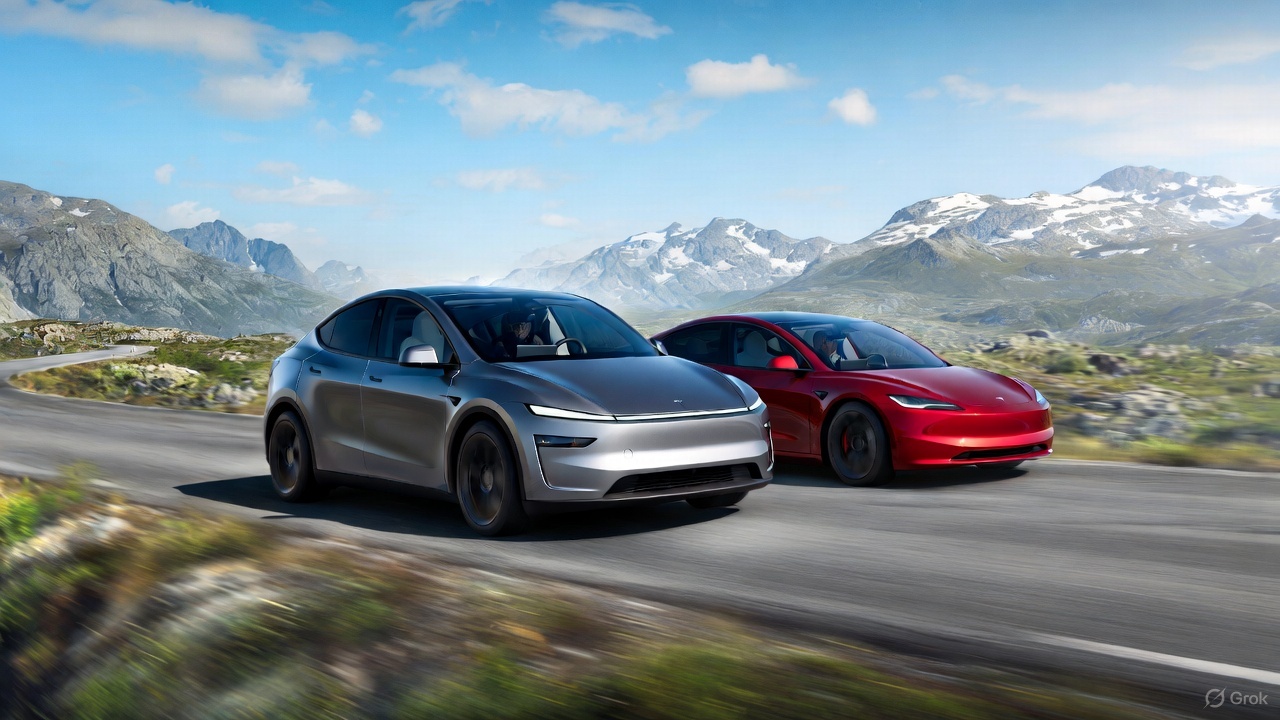

News
Elon Musk on humans in Mars before he dies, urges faster pace of progress
Elon Musk has a major goal: to get humanity to Mars before he dies. A lofty goal that he reiterated before a crowd on Monday at the Satellite 2020 conference in Washington D.C.
“If we don’t improve our pace of progress, I’m definitely going to be dead before we go to Mars,” Musk said to the journalists and industry leaders in attendance.
— Elon Musk (@elonmusk) March 11, 2020
SpaceX, founded by Musk in 2002, nabbed the first of many lucrative deals for the burgeoning rocket company in 2008 when the company was named one of two corporations that would ferry cargo to the International Space Station (ISS). (Orbital Sciences, now Northrop Grumman is the other.)
To date, SpaceX has flown 20 cargo resupply missions to the space station, and very soon will send an upgraded version of the Dragon to ferry astronauts to the orbital outpost as well. But this is just the beginning for Musk and SpaceX.
Musk has his sights set on the moon and Mars. But he’s worried that our current technology isn’t progressing as quickly as it should in order to make Mars happen. That’s evident if you look at the commercial crew program.
In 2011, NASA’s storied fleet of space shuttles retired, and space agencies around the world were forced to rely solely on the Russian Soyuz to transport astronauts to and from space. That agreement would only be temporary as NASA tapped SpaceX and Boeing with the task of building its next-generation astronaut taxis.
Innovation takes time, and after years of delays due to various reasons, SpaceX is on the cusp of launching its first set of astronauts. Bob Behnken and Doug Hurley will board the Crew Dragon spacecraft and fly to the ISS as early as this May. NASA is still trying to iron out the details (like how long they will stay) as SpaceX completes the last two parachute tests prior to launch.

Simultaneously, Musk and SpaceX are working on a massive rocket that will ferry people and cargo to Mars. Called Starship, the heavy-lifter is approximately 400-feet of stainless steel that could transport the first people to the red planet. That is if all goes as planned.
Eagle-eyed onlookers first spotted the towering silver craft in Jan. 2019 at SpaceX’s work site in Boca Chica, TX. That initial prototype was the first step towards reaching Mars and Musk’s goal of building a city on Mars with up to one million people in it, preferably sometime within the next 50 years.
To do so, SpaceX will need a fleet of massive, silvery spaceships. The company is on its third test article, but Musk hopes to ramp up production to one Starship a week by year’s end.
“Unless we improve our rate of innovation dramatically, then there is no chance of a base on the moon or Mars,” Musk said during the conference. “This is my biggest concern.”
Starship will launch atop a Super Heavy launcher. In true SpaceX fashion, both vehicles will be reusable, which lowers the cost significantly. Musk has said that eventually, each Starship mission could cost a mere $2 million.
Starship could launch as early as this year, especially if production rates ramp up the level that Musk hopes. So far, the craft is already booked for one trip around the moon sometime in 2023. That Starship will carry Japanese billionaire Yusaku Maezawa.
Musk also squashed the notion that his Starlink internet service would go public. According to Musk, that endeavor could net his company as much as $30 billion, if it doesn’t go bankrupt. “Guess how many LEO constellations didn’t go bankrupt? Zero,” he said. “We just want to be in the non-bankrupt category.”
So for now, Musk says SpaceX is focused on getting the project off the ground and not spinning it into a publicly-traded company. SpaceX officials have said that the service could roll out later this year in a limited capacity until more satellites come online. To date, the company has launched 300 Starlink satellites, with another batch of 60 set to launch on Saturday (Mar. 14).

News
Tesla FSD earns high praise in South Korea’s real-world autonomous driving test
As per the Korea Expressway Corporation’s report, the FSD test was conducted on December 15, 2025, from 10 a.m. to 6 p.m.

Tesla’s Full Self-Driving (FSD) has received a bullish assessment from the Korea Expressway Corporation following a real-world autonomous highway driving test.
A report of the test, shared on Naver Cafe, showed high praise for the system’s safety, capabilities, smooth maneuvers, and confidence.
South Korean highway test
As per the Korea Expressway Corporation’s report, the FSD test was conducted on December 15, 2025, from 10 a.m. to 6 p.m. Four people were in the Tesla that was tested, including the head of the mobility department. All four FSD driving modes were tested, from “Sloth” to “Mad Max.”
To test FSD’s performance, the system was tasked to operate on highways such as Gyeongbu, Cheonan, and Cheonan-Nonsan, as well as city areas in Dongtan New Town, Sejong Special City, and Daejeon Metropolitan City, among others.
Since FSD is only available for the Tesla Model S and Model X that are imported to South Korea from the United States, the system was not tested in a Model 3 or Model Y, which comprise the majority of Teslas on the country’s roads today.
Highway test results
Results showed FSD performing well, both in inner-city roads and on highways. In inner city roads, the testers noted that FSD was capable of autonomous driving at a level that already exceeds that of general human drivers, except in very few areas, such as unprotected left turns and work zone intersections.
In highways, the testers described FSD’s performance as “excellent,” though the system still showed frequent cases of violations in local bus lanes and max speed limit rules. These, however, could hopefully be addressed by Tesla in a future FSD update without many issues. The testers also noted that in some parts of the test, FSD seemed to be driving autonomously in accordance with traffic flow rather than strict traffic rules.
테슬라 Fsd 고속도로 자율주행 테스트 결과 보고 by Simon Alvarez
News
Tesla claims nearly 20% market share as Norway sets new car sales record
Tesla captured roughly one in five new cars in Norway, highlighting its dominance in the world’s most EV-friendly market.

Norway shattered its all-time new car sales record in 2025, and Tesla emerged as the clear winner. A year-end rush ahead of higher EV taxes pushed registrations to nearly 180,000 vehicles, with electric cars accounting for 96% of sales.
Tesla captured roughly one in five new cars in Norway, highlighting its dominance in the world’s most EV-friendly market.
Norway’s EV rush
As noted in a CarUp report, Norway’s electric vehicle sales in 2025 surged, thanks in part to buyers rushing ahead of a post–new year VAT increase of roughly 50,000 kronor on many new electric cars. This ended up pulling demand forward and setting a national record with almost 180,000 registrations in 2025.
The result was unprecedented. From the vehicles that were sold in 2025, 96% of new cars sold were fully electric. And from this number, Tesla and its Model Y made their dominance felt. This was highlighted by Geir Inge Stokke, director of OFV, who noted that Tesla was able to achieve its stellar results despite its small vehicle lineup.
“Taking almost 20% market share during a year with record-high new car sales is remarkable in itself. When a brand also achieves such volumes with so few models, it says a lot about both demand and Tesla’s impact on the Norwegian market,” Stokke stated.
Tesla domination
Tesla led all brands in Norway with 34,285 registrations, which is equal to a 19.1% market share. These results place Tesla well ahead of Volkswagen and Volvo, which held a 13.3% and 7.8% market share in 2025, respectively.
On the model chart, Tesla’s strength was even clearer. The Tesla Model Y topped all vehicles with 27,621 registrations, accounting for 15.4% of the entire market. The Tesla Model 3 also ranked among the top five, accounting for 3.7% of Norway’s entire auto sales in 2025.
Other strong performers included Volkswagen’s ID.4 and ID.7, Toyota’s bZ4X, which commanded 4.9%, 3.9%, and 4.1% of Norway’s total sales in 2025, respectively.
News
Tesla China sees 2nd-best month ever by selling 97,171 vehicles wholesale in December
The results mark Tesla China’s second-highest monthly result on record, trailing only November 2022’s 100,291 units.

Tesla posted a sharp year-end rebound in China last month, with December’s wholesale figures climbing to their second-highest level to date.
The surge capped a late-year recovery for the electric vehicle maker, even as full-year wholesale figures still finished lower year over year. Still, the data highlights how Tesla China’s offerings still resonate with customers in the world’s most competitive electric vehicle market.
Tesla China’s December surge
Tesla China sold 97,171 vehicles wholesale in December, as per data from the China Passenger Car Association (CPCA). The results mark Tesla China’s second-highest monthly result on record, trailing only November 2022’s 100,291 units, based on data compiled by CNEVPost. The details of Tesla China’s December results, such as its domestic sales and exports, are yet to be released.
December’s wholesale results represent a 3.63% increase from the same month last year and a 12.08% jump from November’s 86,700 units. It also marked the second consecutive month of year-over-year growth, signaling renewed momentum in China.
Tesla’s late-year momentum is believed to be partly driven by Tesla pulling deliveries forward to allow buyers to take advantage of more favorable purchase tax policies before the calendar year ended. That strategy helped boost monthly performance even as competition in China’s EV market remained intense.
Tesla China’s FY 2025 volumes
Despite the strong December finish, Tesla China’s wholesale sales declined on an annual basis. The electric vehicle maker’s total wholesale figures for 2025 reached 851,732 units, down 7.08% year over year. This could have been due to a variety of factors, from intense competition in the domestic Chinese market to Giga Shanghai’s changeover to the new Model Y in the early part of the year.
Tesla Gigafactory Shanghai continues to play a central role in its global operations, producing the Model 3 sedan and Model Y crossover for both Chinese customers and export markets. The efficiency of Gigafactory Shanghai has allowed it to become Tesla’s largest factory by volume, as well as the company’s primary vehicle export hub.







